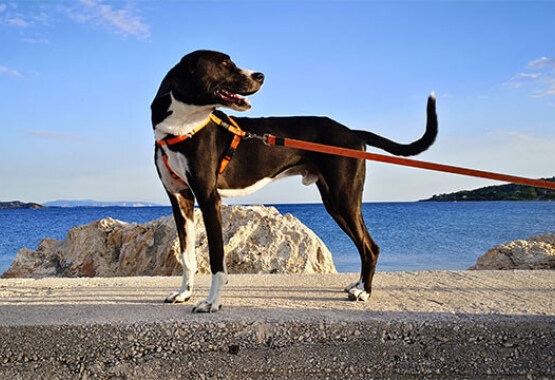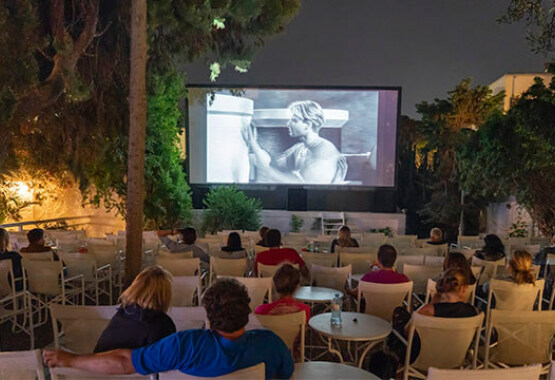Sponge harvesters from Kalymnos
The diving legends
The waters surrounding Kalymnos Island seem endless and are the deepest shade of blue; the famous local sponge fishermen are inextricably linked with the well kept secrets and naval stories that border on myth. Fearless strong men wrestle with the elements, in search of the hidden treasures in the sea’s most distant corners….
Kalymnos Island is famous worldwide as home to divers and sponge harvesters. For locals, sponge fishing used to be their source of income; a “mission impossible” that only the fittest and bravest could pursue successfully.
The centuries-old tradition in sponge fishing determined the island’s identity and contributed significantly to its financial prosperity. Enterprising local tradesmen sold their valuable harvest in Syros, Nafplio and Constantinople and travelled as far as Odessa, St Petersburg, Moscow, Trieste and the Middle East…
Diving Methods
Historical records of the 1800s help us “dive” into the “travels of life or death” of the daring sponge fishermen who ventured into the open sea and started exploring the sponging grounds early in the springtime, carrying with them only a few provisions and their stamina. These legendary men went “skin diving”, reaching depths of 30 metres, shoved by a heavy skandalopetra i.e. a piece of marble that helped them dive quickly to the bottom. In the autumn, when the sea became too cold for diving, they would return to the island where everyone welcomed them with tears of relief and joy.
Around 1860 a new and revolutionary -for those times- method of diving was invented, called Skafandro or diving suit. The diver’s body was fully covered (the suit was complemented by a helmet, a copper breastplate, shoes and weights on the chest) allowing him to stay on the seabed for much longer. During the dive, a manually operated air pump with pistons would send natural air to the diver’s helmet through a pipe (called markoutsi). Efficient though this method proved to be, it equally proved dangerous, as thousands of deaths and paralyses had been recorded (due to decompression sickness);ignorance of diving rules - concerning in particular the resurfacing phase - was behind it.
In 1920, a new respiratory apparatus was adopted, called the Fernez method, and accidents decreased. The advantages of this apparatus were the following: use of a small air tank, worn on the diver’s back that provided a steady flow of air, doing away with the heavy suit, and a light air feed pipe.
During the 1970s all the older diving methods were replaced by the modern hookah system: the diver wears a frogman’s suit and an air compressor provides him with air from the boat. Divers receive their education at the Kalymnos State School of Divers – the only one of its kind in Greece – that offers a professional diver’s state diploma.
Preparation for the long journey that lasted for 6-7 months used to be a special ritual. Let’s revive it.
Sailing away
Preparations for sailing away were made at a feverish pace and lasted approximately two months – February and March! Shipmasters would muster the crews and collect all the necessary tools of the trade; they would get provisions ready for the crew: sackfuls of hardtack, preserved cooked meats, legumes, salted fish and tons of water in barrels were stacked in supply boats.
Prior to the departure, a holy water religious service would be performed and St Nicholas would be invoked, the divers’ protector and their spiritual “haven”.
Anchors aweigh
The departure day was rough and emotionally intense. Mothers, women, children, and elderly sponge fishermen would gather at the harbour to wave their relatives goodbye. Caiques would sail away and the horizon would be filled with white scarves waving in the wind, wishing Godspeed to those leaving.
As time passed, the fleet became adapted to the new sponge harvesting methods. Skiffs, i.e. the caiques used by “skin-divers”, were succeeded by achtarmádes i.e. boats carrying the air-pump machine, light sailing boats equipped with a glass-bottomed device for harpooning sponges on the seabed, sponge fishing vessels called kagkáva, supply boats called depozito and a type of packet boat called bakéto i.e. boats that acted as a “link” between the island and the sponge fishermen at sea.
Sponge diving was a thriving trade in the mid-19th century up until the early 20th century. A remarkable sponge fishing fleet was created in the Dodecanese islands (particularly in the areas of Symi and Kalymnos Islands) but also in Aigina, Ydra, Paros, Chalkida as well as Koutali Island in the Sea of Marmara… Fighting rough waters and high winds, avoiding shoals or “pitfalls” close to the shore, the sponge harvesters would ply the deep waters of the Aegean Sea and the fishing grounds of the Mediterranean and North Africa.
Seas rich in “catch”
Sea sponges have a special structure that is based on a system of canals that form meanders and allow water to pass freely. Through their countless pores they draw in large quantities of water, reaching even three times their volume. There are commercial and non commercial types of sponges. The commercial species harvested in the Aegea Sea and in the wider mediterranean area are the following:
- Honeycomb sponge
- Matapas or fina silk or greek bath sponge
- Vase sponge or melathi or turkish cup or Syrian fine sponge
- Elephant ears sponge or psathouri or lafina
- Tsimoucha or leathery sponge




